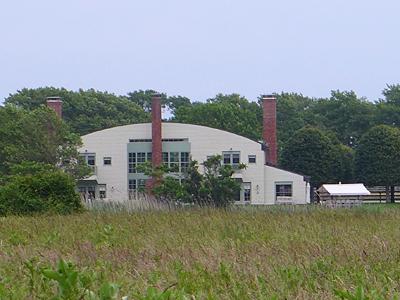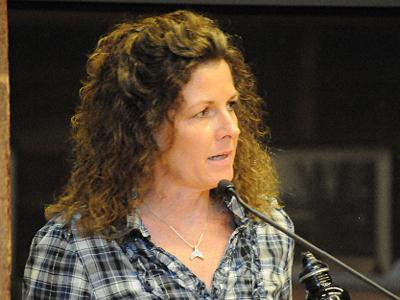Debate on Alcohol Ban at Beaches
Debate on Alcohol Ban at Beaches

A hearing last Thursday night at East Hampton Town Hall on a daytime alcohol ban at two Amagansett beaches drew speakers mostly in favor of it. Drinking would be banned during the hours when lifeguards are on duty, within 1,500 feet of the road endings on the Indian Wells and Atlantic Avenue beaches.
Seven of nine East Hampton Town Trustees, who have jurisdiction over town beaches outside of Montauk, object to the ban as proposed. They have suggested limiting it to Indian Wells only, over a smaller area than proposed, and only on weekends.
Diane McNally, the trustees’ clerk, expressed frustration during the hearing. “We offered you a compromise, which in our opinion just wasn’t considered at all,” she told the town board. She submitted a petition against the ban as proposed, with 200 signatures collected in just over four days.
Indian Wells beach in particular is the target of residents’ complaints that it has become a hangout for rowdy beer-drinkers, a shift from the family-friendly beach it had always been. Changes over the last two years enforcing resident-only parking there have helped, some said at the hearing, but not eliminated the issues.
East Hampton Town Police Chief Michael Sarlo told the town board that the officers have issued a number of summonses at Indian Wells in the past few years. However, he said, much of the behavior prompting complaints did not violate any laws.
He then read aloud the legal definitions of some legal violations, such as disorderly conduct and littering. “The ‘lewd’ or ‘disorderly’ behavior that many find offensive and wish to curtail,” said the chief, “while [it] may be offensive to some, and may be morally questionable,” is not necessarily criminal.
When people do act in a manner for which they can be ticketed, he said, officers must directly observe the violations in order to issue summonses.
During the last two summers, when partying at Indian Wells was promoted among seasonal visitors on websites such as Guest of a Guest, a traffic control officer and a Marine Patrol officer were stationed there, the chief reminded the gathering. Another Marine Patrol officer was assigned to make spot checks. Those officers have been handing out pamphlets on beach regulations, and garbage bags, he said.
In 2012, Chief Sarlo said, about 60 summonses were issued, for transgressions including public urination and failure to follow posted regulations or listen to lifeguards. In 2013, 37 summonses for open containers of alcohol in the parking lot were issued.
Those who spoke against the drinking ban at the two beaches decried its affecting everyone when the behavior of only some was the problem. “I don’t think this is well thought-out,” said Ira Barocas.
But several speakers said it was needed. Rob Andrade, an Indian Wells Highway resident, said the beach there hadonce been a haven for kids, including his 10-year-old daughter. Now, he said, “I do not want her seeing what goes on. I’ve seen fights there. That’s what happens when people drink.”
Elaine Jones detailed her multigenerational roots in Amagansett and how her family has always enjoyed Indian Wells Beach. “I went to that beach, my daughter went to that beach, and now my grandchildren can’t go to that beach because my daughter will not allow them to witness that behavior.”
“The behavior exhibited only occurs on the weekends, it seems,” said Deborah Klughers, a town trustee. “So why are we punishing the residents, for the most part, or people who aren’t the problem?” She said pushing those who want to drink on the beach 1,500 feet from the lifeguards would endanger swimmers and create more problems because the bathrooms and garbage cans would be so far away. Instead of a ban, she said, “Keep going forward with the upped enforcement.”
Marc Schultz called the ban a “reasonable compromise” that would help to reverse the new “party-hearty” tenor at Indian Wells.
Bill Taylor, a town trustee who supports the ban and described himself as a “minority” within the group, said, “I think it’s time we sent a message to the people who are destroying our beaches. I think over the last four years the beaches in our town have gotten out of hand, and I think this says we’re not going to take it any more.”
“This is a matter of public safety, not a matter of public access,” he said, adding that as such it was up to the town board and not the town trustees.
Diana Walker of Amagansett said that while she believes the trustees support more orderly behavior on the beaches, they “are conditioned to be defensive about their jurisdiction.”
Stuart Vorpahl, a former trustee and a longtime proponent of trustees’ historical rights, said the town board had “got off on the wrong foot” by initially scheduling a public hearing on the drinking ban without consulting the ancient body. The trustees’ authority as a “state within a state” has been upheld by the courts, he said, but has “been ignored time after time” by town government, and the drinking ban was shaping up to be another example of that attitude “raising its shameful head.”
“I get the feeling that our authority is being challenged once again,” said Brian Byrnes, a trustee, “and if we’re going down, we’re going down swinging.”
The 500-foot boundary that the trustees suggested for the area where alcohol might be banned, is the length of one and a half football fields, he said, and “would be adequate.”
Ms. McNally noted that the proposed law would amend Chapter 82, a “peace and good order” section that addresses public drinking, but not Chapter 92, which covers beaches and parks. Changing the beach regulations in that chapter requires the approval of the majority of town trustees — so, Ms. McNally said, there “remains a question” about what would happen if the town attempted to enforce a beach regulation without trustee cooperation.
“We would always prefer to act in concert with the trustees,” Town Supervisor Larry Cantwell said.
“I know,” said Ms. McNally. “But every time you say that, the words are there, but the actions are not.”
Stephanie Forsberg, the trustees’ assistant clerk, said the group would like to see a compromise.
“The first time we are having a dialogue is at a public hearing,” she told the town board. “Yes, we are members of the public, but we are your elected officials.” But, she said, “this is where I want to bring us, as two elected boards, back together.”
Mr. Cantwell reminded the audience that he had attended a trustee meeting to tell them about the proposed alcohol ban when discussions of it first started. “The town board changed this law in part in response to the town trustees,” he said. “You may feel like it’s not enough of a compromise, but it’s a compromise.”
“I respect the town trustees very, very much,” said Joan Tulp of Amagansett, who supports the proposed ban. “I do this very sadly, but times have changed.” Just the day before, she said, “on a beautiful, peaceful day at Indian Wells, we were surrounded, and our peace was shattered, by the paparazzi and the Kardashians.”
That got a rise from Ms. McNally, who got up to comment again, this time, she said, as an individual, not as a representative of the trustees. “We have allowed this to happen,” she said, “these people who take advantage of our resources and are just trashing the town on so many levels. It’s time to stop allowing this to happen in our community.”
For example, she said, people who are being rude in such places as the grocery store should be told, “We don’t act like that in our town.”
“And also,” Ms. McNally said, “who gave the Kardashians permission to film on Indian Wells Beach? Because the trustees didn’t, and if you see them on the beach, call the police. Get them out of here.”









